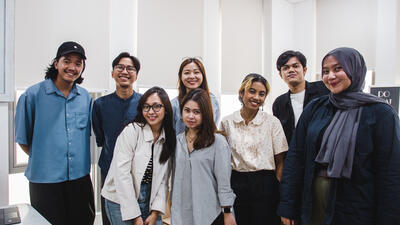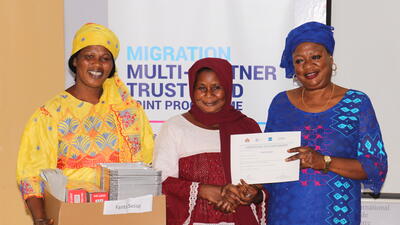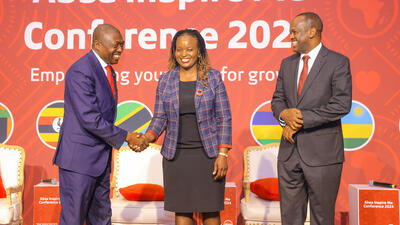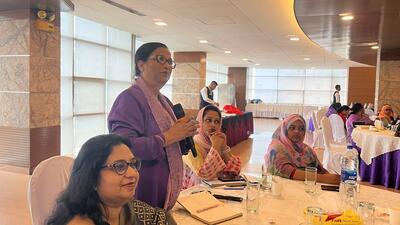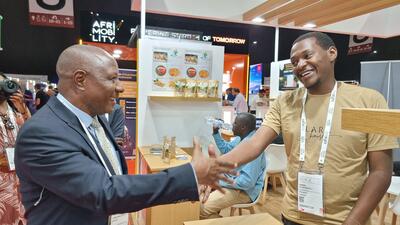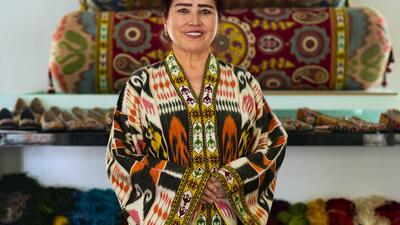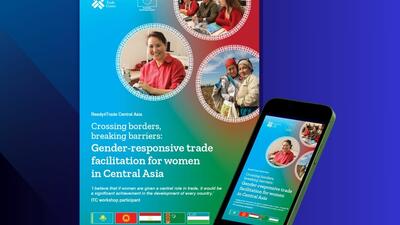Empowering Women, Powering Trade
The last time International Trade Forum focused on women in trade was autumn 2008. That issue garnered an unprecedented response from our readers, becoming our most widely circulated edition yet. It still graces the shelves of many policymakers and leaders in the development community.
It was published at a time when interest shifted from ‘women’s empowerment’ to ‘women’s economic empowerment’. This was in part fueled by a steep increase in sex-disaggregated data that revealed women to be bigger drivers of economic growth than China, India or the Internet, as observed by The Economist. This increased interest in helping more women succeed in trade — in particular women in developing countries highlighted gender-based constraints to trade. ITC’s response was the launch of the Women and Trade Programme in 2010.
In the years since then, interest has peaked in two areas at the heart of the trade and development agenda: Aid for Trade and collaborating to achieve results. ITC-led initiatives have put gender on the Aid for Trade Agenda in several ways. Working with the Committee on Trade and Development, ITC shared research which demonstrates that development objectives can be met by increasing women’s income, including through trade. The Enhanced Integrated Framework (EIF) is now considering gender issues in trade by using a revised trade diagnostic tool and training for national implementation units in gender mainstreaming. This is being conducted by ITC in partnership with the EIF Secretariat. ITC sets targets internally to achieve gender parity in staffing and gender mainstreaming in programming in line with its Gender Mainstreaming Policy.
ITC has intensified its outreach to women’s business organizations to bring them into contact with buyers, using Aid for Trade to build women’s capacity to meet buyer requirements. These new partnerships are in their second year of operation under the Global Platform for Action on Sourcing from Women Vendors. We are delighted with the ensuing results: nearly US$ 15 million in sales; the expansion of some businesses, thus generating jobs; and a rise in requests to join the Platform to empower women and power trade.
A heartening trend, highlighted in several articles in this issue, is the growing interest of multinational corporations and governments in improving women business owners’ access to procurement opportunities. Tenders have always been open to bids from companies owned by women. However, the realization that women business owners are not in the winner’s circle has prompted supplier-diversity initiatives. This puts the spotlight on women’s access to the market for goods and services, while creating competition with traditional suppliers. May the best person win! We hope that increased transparency and openness in the process means that he — or she! — does just that.
While entrepreneurs are often in the spotlight, women in rural areas in export-oriented value chains — typically farmers — often go unnoticed and unpaid. This is problematic because it breaks the link between trade and development. In essence, more work can only lead to more empowerment if there is more income. In many countries and cultures where ITC is active, men continue to control the financial resources earned through the work of women. ITC is documenting practices where women not only get paid for the work they do, but are able to retain control over those financial resources, benefiting their families and their communities. This is at the heart of the economic empowerment of women and the transformational power trade can have on development.
It is my hope that as the international community strives to achieve the Millennium Development Goals we concurrently take on board lessons learned. It is clear that the absence of indicators for women’s economic empowerment has been a weak point. The post-2015 development agenda must therefore clearly articulate the results sought, in a framework where the impact on women’s income will be measured. This is the approach we are putting in place at ITC. I hope you are similarly inspired to do so through the examples demonstrated by others in these pages.




